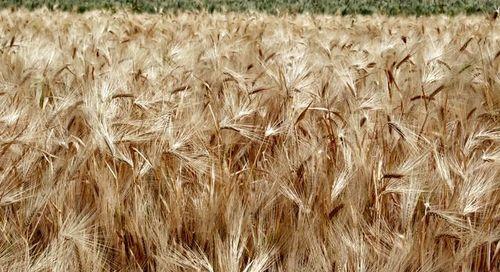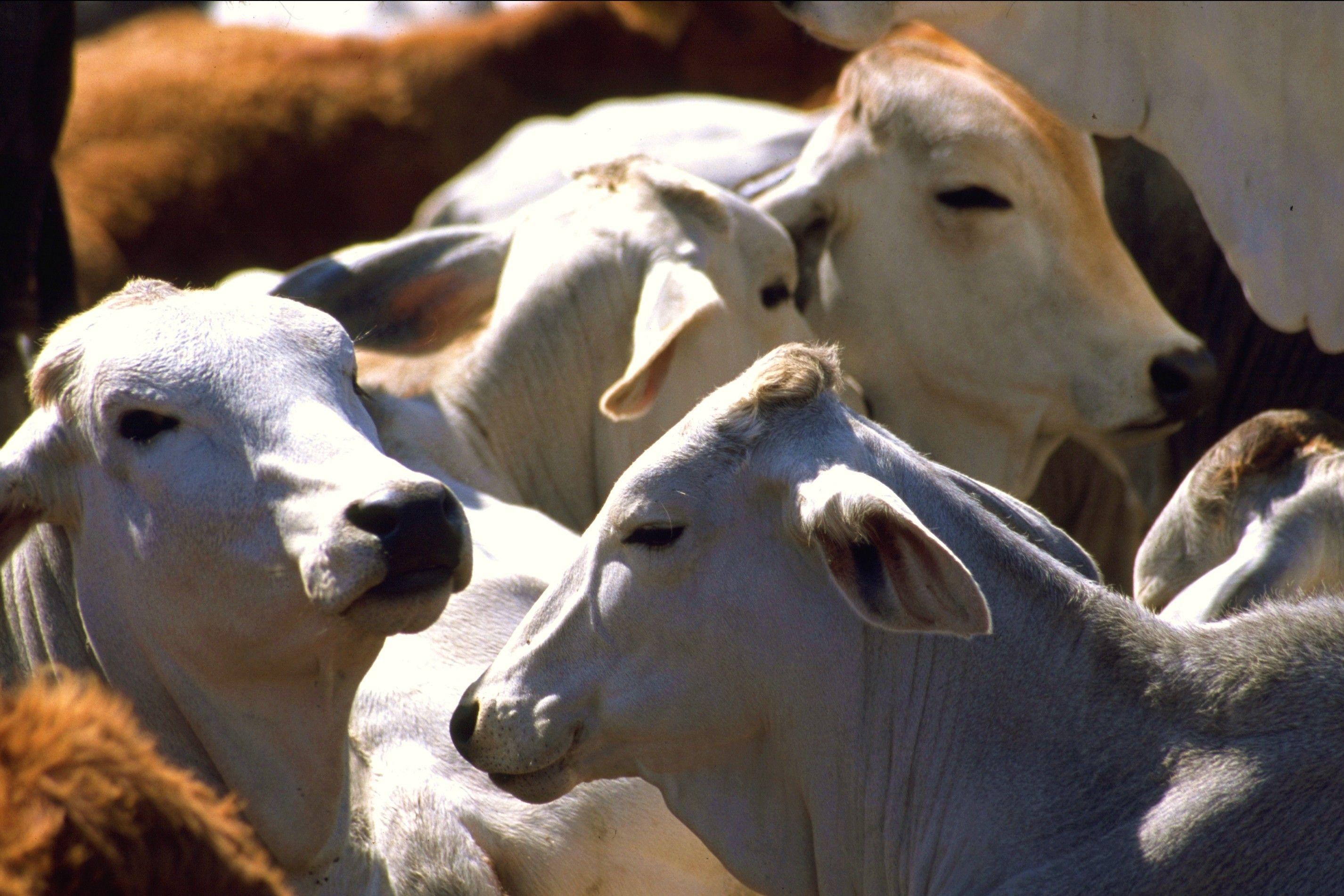The drought in Sonora affects agricultural production cycles, while the entity is far from optimizing water management.
Between January and September, 64,700 head of cattle were exported to the United States, a 35% decrease in primary sector activity that did not cease during the pandemic, according to data from the National Service for Food Health, Safety and Quality (Senasica).
Farmers rely on rain to have pasture areas where they can put their cattle. “If there is no main thing, which is pasture in the mountains, on the ranch, let's say, it will impact them to get fat,” said Rodrigo González Enríquez, research professor in the Department of Water and Environmental Sciences of the Technological Institute of Sonora.
As for agriculture, the state is dependent on wheat, a crop for which it has the production infrastructure, a system that works like an anchor that makes it difficult to move to other crops.
As of January 15, only 25% of the Sonora area is drought-free, making it the third state most affected by this phenomenon after Baja California and Nayarit, according to the Drought Monitor of the National Water Commission (Conagua).
According to the report, 22% of Sonora's municipalities have a drought, making it the eighth entity in the country with the highest percentage of mayors under this condition.
In an interview, González details about the effects of this phenomenon and offers some ways to solve it.
— It seems very obvious, but how much does the drought in Sonora have to do with climate change?
These are the factors of climate change, there is an acceleration of the hydrological cycle and a distribution is made. On the one hand, we have melting ice and an increase in more water in the seas, but on the other hand we have new heat flows that change the flow of water in the sea and that give rise to the phenomena of El Niño y la Niña, where water is distributed in places where it normally wouldn't rain. So keep in mind that in some places we are going to have a drought and in other places we are going to have floods.
— Drought has impacts on various sectors. To name one, the farmer. A comparison is made of cattle exports and there is a significant decrease. What can you tell me about effects on the agricultural sector?
Water is the factor of development in different sectors. So if there is not enough rain, then there are no pastures in the mountains. In the end, what a farmer does is to cause the reproduction of his number of cattle and then their diet, first in the wild and then taking them to fattening channels, where they end up reaching the appropriate weight and then taking it to both national and international markets.
If there is no main thing, which is the pasture in the mountains, on the ranch let's say, to get to the fattening it will impact them. So, if there is going to be a drop in meat or livestock for export that occurs during a dry season, why, because cattle die in the mountains. And the same thing happens with milkmaids, who also receive a feed from the forest and another in the barn so that they generate the most milk.
— There are certain predominant types of crops such as wheat and corn agriculture, which demand a lot of water. Is it feasible to move crops to others?
There are some crops that demand a lot of water and others that demand less, but agricultural production is also driven by market demand. What is being required in the market. That's the one, the other is what infrastructure conditions I have as a producer to be able to sow what the market asks of me, on the understanding that I'm going to try to sow what the market pays me best.

Photo: Ministry of Agriculture and Rural Development
— What can you tell me about the changes in agriculture in the state and the role of drought?
In the past, in the 1970s, when these lands began to be opened to agriculture, rice was planted in the Yaqui Valley. There were rice paddies, rice if you imagine in an environment in China, which is where rice is most planted, as it grows practically in a wetland. Where it will always be flooded with water.
Then there were rice crops here because there was enough water to be able to produce it, now there is no more, why, because before there were fewer farmers.
Later, dams, canals were built and conditions were built to favor gravity agriculture, that is, that of the furrow. A lot of water is lost, but they can be more efficient if drip irrigation technology is installed, sprinkler irrigation and even more so, if I take the crop to a greenhouse, where I can control the amount of water I put into the crop, the temperature or the climate inside and generate a much better quality production.
— Are there examples of crops that were stopped being planted to make way for new ones?
In the 70s, when these agricultural areas were extended to their maximum capacity, cotton was planted and there was infrastructure to process cotton, and over time cotton was removed, above all, by pests. Now cotton can no longer be planted because there is no infrastructure to process it.
Wheat is the one that completely replaced cotton and (Sonora) became practically Mexico's breadbasket in this region and people have all the necessary preparation. The warehouses and the entire production system are made for wheat. And so it is sown in 80 or 90% of the entire area (arable). There is a huge monoculture because wheat is what people were trained to do for many years. So, there is all the infrastructure that is required for production and also for commercialization. The wheats here are even sold to make pasta in Italy. It's all done for that. Removing it is complicated.
— What sectors of the population are most affected by droughts in Sonora?
The ejidatarios, the poorest, those who do not have access to technology to make the use of water efficient because it is expensive. They often find it necessary to rent the land with the little right amount of water they have to a producer who is known as a cacique and who has the capacity to rent the land to many and thus add a large amount of planting and apply their technological resources, who do have access to drip irrigation, sprinkler irrigation and thus produce the product that their marketing system has.
Then the small producer or ejidatario is left in a condition of living on income, which is a very low volume of profit, he does not lose, because he is somehow obtaining some benefit that income gives him, but he does not have the capacity to produce.
— What does the government do? , from your perspective, what efforts are there in the state to counteract the effects of drought on agriculture and livestock?
There are very few of them. Practically, they disappeared. They were more projected towards the small producer, towards the ejidatario. Right now, ejidatarios with less than five hectares (Federal Production for Welfare Program) are very supported. They give them support to plant those five hectares. Then, well, it's not enough. Nor is the production that was generated before, and yet it does not satisfy having to rent land in order to survive.
But the 5 hectares are not enough to live on, at least when it comes to planting wheat. And that's what they support them for, that is, for a crop that is not very profitable. If they were given support for 5 hectares of tomatoes, chillies or vegetables, then it would be enough for them, but that's not what they give them for. They are given for basic crops, for beans, for about four or five agricultural products that do not have the highest profitability.
— What about programs to induce rain? Do they have results?
There are other actions that they are doing and that even included in the 2022 budget to cause cloud bombing to induce rain. Last year, a lot of resources were generated and they claim that they managed to increase the rainfall, but that is totally false.
What the bombardment of clouds with silver salts does, which is a costly product, is to cause the cloud to precipitate. But the cloud was going to fall anyway, all you do is fall in one place, but in doing so it stops precipitating in the other one it was destined for.



Comentarios (0)